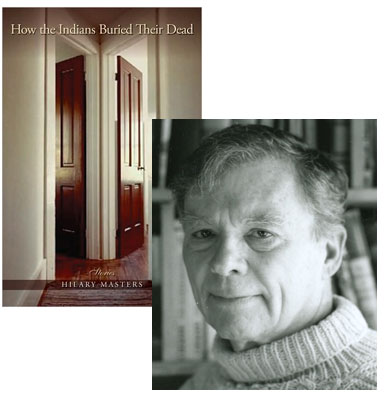Hilary Masters and Chekhov’s Eye for Detail

This week’s tribute to SMU Press and its dedication to the art of the short story continues with an essay from Hilary Masters, the author of How the Indians Buried Their Dead. He’s chosen to write about Anton Chekhov, an apt choice considering that one of the stories in this collection is called “Chekhov’s Gun” (which, as it happens, manages to self-consciously invoke the principle and still surprise you with its ending, unless I suppose some blogger comes along and gushes to you about it). But that’s not even the story that’s most relevant here—and there’s plenty more brilliantly poised works in this collection, where you’ll read about futile efforts to revisit a childhood home, a trio of friends grappling with the memory of a departed fourth (along with the limits of that memory), and a perfect example of why one should just about never spontaneously decide to phone one’s exes after years of silence.
Chekhov’s “Lady with the Pet Dog” is a short story I read at least once a year and never tire of his telling of this doomed couple who are punished because they fall in love.
How he tells his story is instructive for all writers. First, how he deceives both the reader and Gurov, the main character, by details that give a false impression of Anna Sergeyvna. What about that dog?
In some versions the small dog is described as a Pomeranian, and in all it is pictured as a decorative but useless animal and so we assume the owner is the same. What impression would Anna give if the dog had been a pit bull or a great Dane?
And that lornette Anna lifts to her eyes is a pretentious article, not really useful for reading, and where does she lose it? In the crush on that sultry day when they meet the boat on the landing just before she “loses” her virtue in Gurov’s arms. Later when he tracks her to her town—where the furnishings of the best hotel’s room reveal what kind of backwater it is—she’s found another lornette, the appearance of propriety restored. For a time.
So many details. And actions as well to indicate character. Take Gurov’s penchant for snacking as the unhappy woman who has become his lover sobs in the bed covers. A brilliant dynamic. After that first passion following the steamer’s arrival, Gurov helps himself to some watermelon as Anna tearfully confesses her innocence, the nature of her flunky husband’s position (once the clothes come off, the truth is out!) and how she felt she had become a ruined woman. Then months or years later, after Gurov recognizes Anna has become very important to him, he is in love for the first time, he still orders up some tea and cakes in the ordinary hotel that harbors them. He snacks as Anna bemoans their fate, and it is a brilliant scene for it shows Gurov has not completely changed. He is still something of a boor; however, this detail helps us believe the greater part of him has changed.
The story is rich with many other insightful moments such as these, beautifully created. I could cite them almost all day and have almost in my classes with younger writers.
Many of us have attempted to imitate this story. My attempt is a story I entitle “Double Wedding Ring” which I wrote to discover what might have happened to this unhappy couple (or one like them), and I told my story from the woman’s point of view. And what does happen? Nothing beyond the terms of the destiny set by Chekhov—no happy ending.
18 May 2010 | selling shorts |

 Our Endless and Proper Work is my new book with Belt Publishing about starting (and sticking to) a productive writing practice.
Our Endless and Proper Work is my new book with Belt Publishing about starting (and sticking to) a productive writing practice. 
